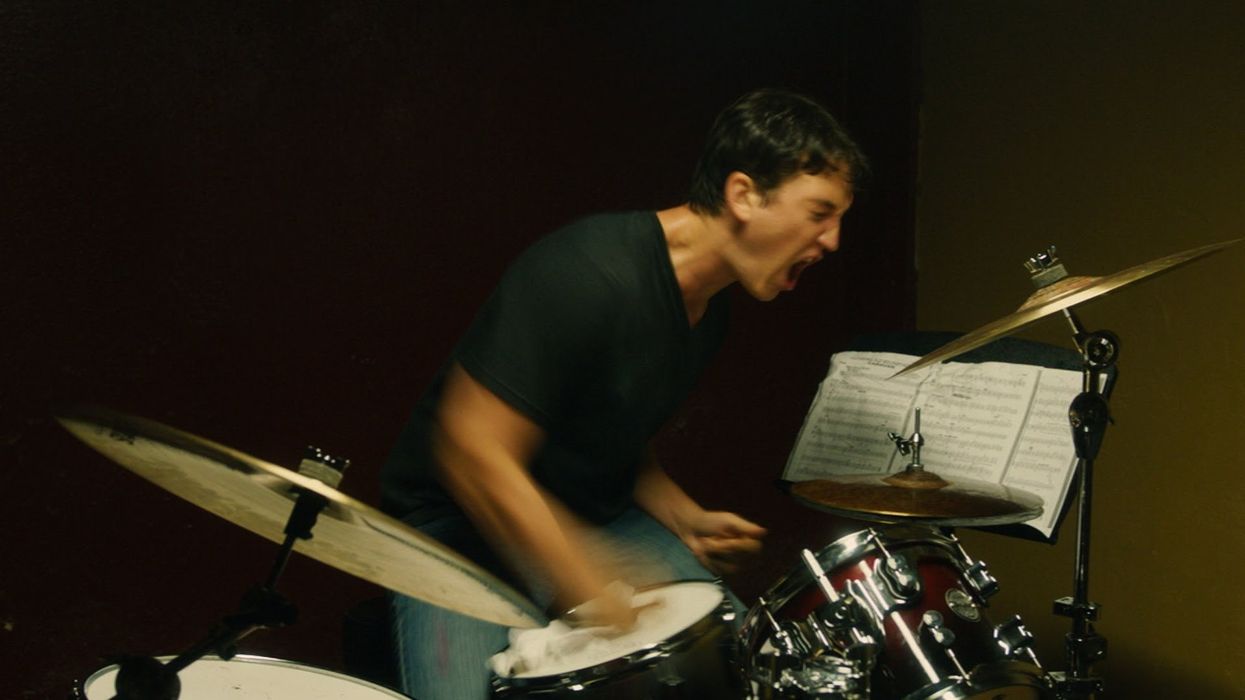Watch: How 'Whiplash' the Short Led to 'Whiplash' the Oscar-Winning Feature
Before Whiplash was an Oscar winner, it was a short film. But Damien Chazelle didn't plan it that way.

Damien Chazelle never wanted to make a short. His feature-length script for Whiplash was finished, it was good, and it was making its way through the Hollywood producer circuit to the tunes of positive buzz. Before he knew it, Chazelle had four of LA's best attached to the project: Couper Samuelson, Jason Blum, Helen Estabrook, and Jason Reitman.
But it just wasn't enough. No one got it.
In an article for MovieMaker Magazine, the director described the main problem others seemed to have with his film: “It’s a movie about a jazz drummer.” But in the director's mind, Whiplash wasn't just some indie character study; it was the year's most gripping thriller. So, feature in hand and producers to back him, he set off to prove it.
Usually, when we think about filmmakers employing a short film strategy, we tend to imagine the short is made prior to the feature as a testament to the director's ability to expand upon his or her idea. Chazelle, however, used his feature as the jumping-off point for his short—which, in turn, would serve to get the feature made.
"Ultimately, it was those producers’ idea that we give financiers a taste of what Whiplash would actually look, sound, and feel like onscreen," Chazelle recalled. "Their proposal was this: We’d choose a scene from the script, shoot it, cut it, and present it." But which scene could they possibly choose to bring everyone up to their tempo?
Through one seamless edit, video essayist Jacob T. Swinney reveals just how remarkably similar the two films are:
Swinney's essay proves just how powerful a statement Chazelle's short was, but it also helps us to answer an important question: What do you need to do to prove your feature script's vision and viability with a short? Chazelle's feature isn't the flashiest of productions in the first place; all he needed to prove himself was a single location, a pair of strong lead actors, a brilliant editor, and three days of shooting.
While the short ended up fulfilling the goal— it premiered at Sundance in 2013 and Chazelle secured funding for the feature four months later—it also provided Chazelle with something no amount of money can buy: experience. "Not only did it arouse interest in the project that hadn’t existed before, it also allowed me to get my feet wet, to fine-tune what I really wanted this movie to be," said Chazelle.
One of the biggest "fine-tunings" proved to be the central location of the short itself. Chazelle realized that while it closely resembled his own high school band room, the practice room he'd chosen for the short didn't suit the mood of the feature. This lesson can be a useful one for every filmmaker. Said Chazelle: "I was being true to the particulars of my own experience, but not to the emotional undercurrents of the scene."
Another great piece of advice he gleaned from the short-to-feature process was to unshackle yourself from your previous work. "Don’t become a slave to what you’ve done before," Chazelle said. "When making the feature, I wound up in the odd position of having to essentially 'reshoot' the short. We had a few different actors, a different location; it was a different movie. I’d grown so used to what the short looked and felt like that it took me a moment to adjust to the new circumstances."












